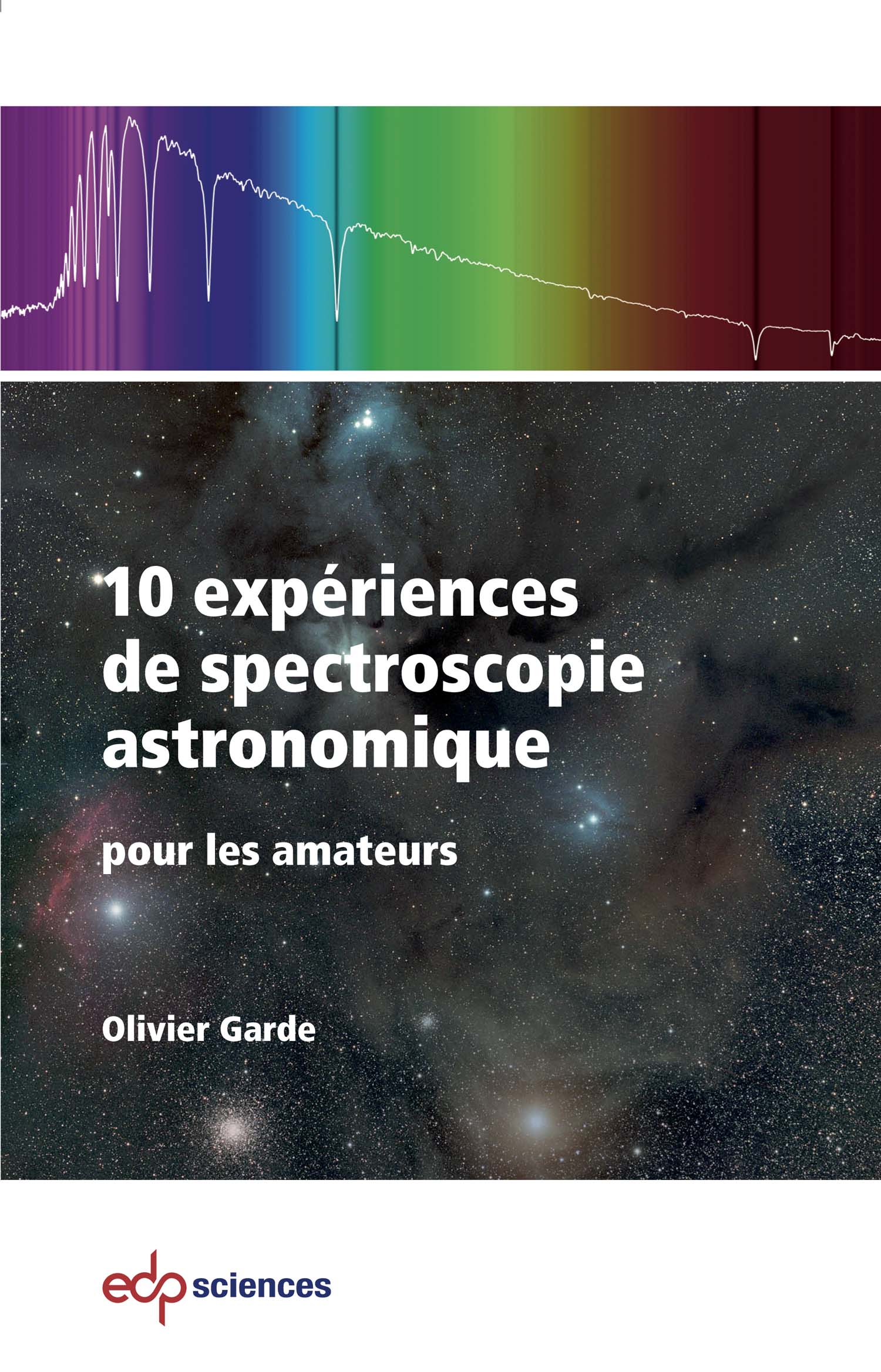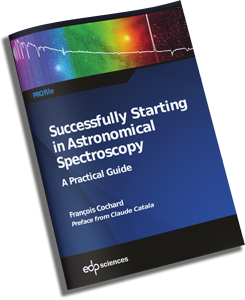10 astronomical spectroscopy experiments for amateurs.
43,00 € incl. VAT - 40,76 € excl. VAT
Pre-order (will be dispatched on the publication date of 17 April 2025)
10 astronomical spectroscopy experiments for amateurs, by Olivier Garde
WRITEN in FRENCH
Tout savoir sur le produit :
Summary
Written in French
Written by Olivier Garde, amateur astronomer and holder of a DU in Astronomy and Astrophysics, he is involved in numerous spectroscopy projects and helped found the associations 2SPOT (spectral observations from Chile) and STAROS Projects (spectral database and design of a spectroheliograph, the SUNSCAN). He is also one of the validators of the BeSS spectral database at the Meudon observatory and co-author of numerous scientific publications.
Astronomical spectroscopy is a vast field of investigation, providing a wealth of information about the celestial objects we observe (planets, stars, nebulae, novae, supernovae, galaxies, quasars) through the light they emit.
In fact, this light can be broken down into atomic spectra, which can be used to determine various characteristics of the star under study.
This book presents the methods and tools used in spectrum analysis, and covers such topics as :
– Redshift or rotation velocity measurement,
– the evolution over time of certain spectral lines,
– the explosion of a nova or supernova,
– the physical nature of an object (is it a planetary nebula? is it a galaxy?).
Spectroscopy can also be used to reconstruct an image by scanning the surface of a planetary nebula for a given wavelength. We can also estimate a star’s temperature, or even assess its density.
For each chapter, the author indicates the type of equipment to be used (optics, camera, spectrograph) and explains step-by-step the methodology for producing the necessary data (acquisition, data processing…) thanks to ten concrete examples that the author has experienced himself.
This book is designed for amateur astronomers who want to know what can be learned from a spectrum, so that they can make their own observations and analyses, sometimes rivalling those of professionals!
Contents
1. The various spectrographs
2. Star temperature and density
3. The redshift of galaxies and quasars
4. Nebula spectro-imaging
5. Folowing Be stars
6. Spectra of novae and supernovae
7. Confirming a planetary nebula
8. Measuring rotational velocity
9. Time series in spectroscopy
10. Spectroscopic binaries
11. Measuring filters, slits and more….
Other information
ISBN : 978-2-7598-3689-5
306 color pages (160 x 240 mm)
Editor : EDP Sciences


